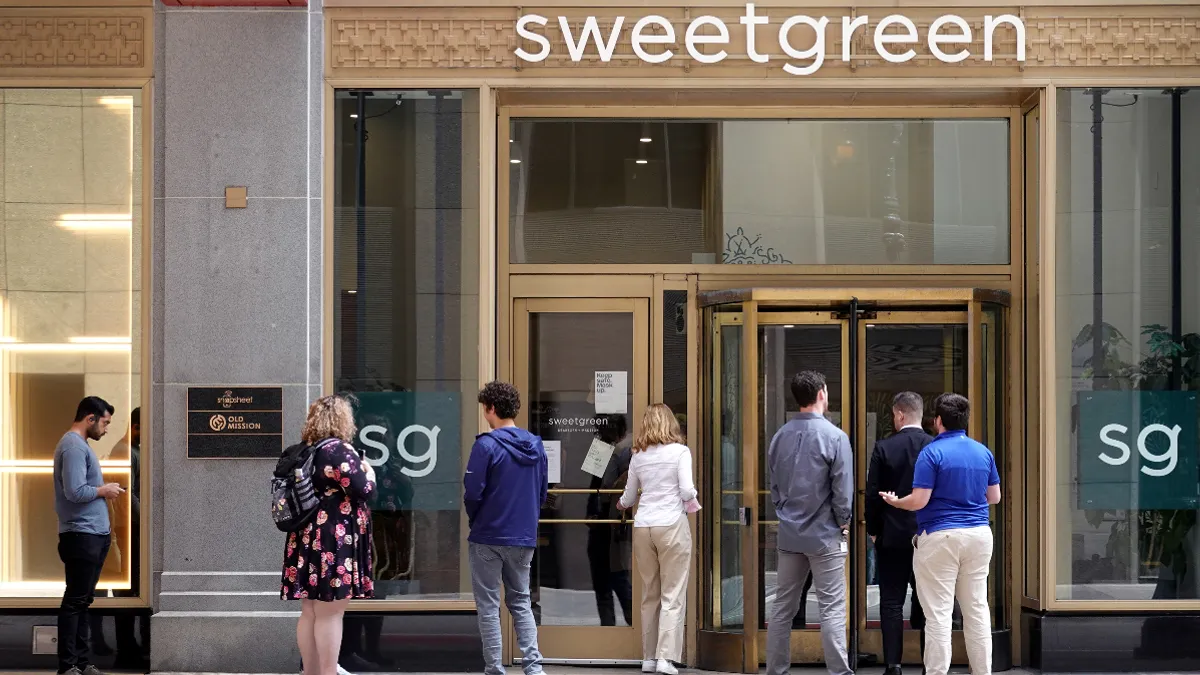Dive Brief:
- Sweetgreen laid off 5% of its support center workforce on Monday and shrank its real estate footprint by vacating its existing support center and moving to a smaller, adjacent location, according to the chain’s Q2 earnings release. The layoffs impact 20 employees, CFO Mitch Reback said during an earnings call.
- These moves are part of the company’s focus on achieving profitable adjusted EBITDA.
- After going public last year, Sweetgreen revealed it had yet to reach profitability. That milestone remained out of reach this quarter, despite Sweetgreen adding units, boosting restaurant-level margins to 18.5% and growing year-over-year revenue by 45% during Q2.
Dive Insight:
Sweetgreen expects these employee reductions to result in a $4 million annual savings from general and administrative expenses, Reback said on the call.
“We made these changes to lower operating expenses and protect our path to profitability in this uncertain environment,” Reback said.
During the quarter, Sweetgreen’s adjusted EBITDA reached negative $7.4 million compared to negative $13.8 million in the year-ago quarter. Losses from operations increased, however, to $42.2 million compared to $24.2 million in Q2 2021, according to the earnings release. While the company doesn’t have an exact timeline for adjusted EBITDA profitability, Reback said the company anticipates being close to breaking even in 2023 and could reach profitability in 2024.
Co-founder and CEO Jonathan Neman said on the call that the company has various growth levers in place that give Sweetgreen confidence it is on a path toward profitability. Those initiatives include plans to reach 1,000 units by the end of the decade, new menu rollouts including dessert, wider drink selection, hearty food and kids meals well as a loyalty program launch in 2023 that will help drive sales.
The company is also working on kitchen optimization through things like improved makelines for digital orders and frontlines that the company is testing. Both lines are more ergonomically designed to improve throughput. The new frontline design, which is being tested in its Long Island City, New York, location, creates more space for mixing and point-of-sales systems, two of the company’s biggest bottlenecks for the in-store experience, Neman said. That location has already seen frontline throughput nearly double. A Sweetgreen in Williamsburg, Virginia, has a new digital makeline, which has already seen a 30% increase in throughput. These two makelines will be deployed across new units starting in August.
“We are fiercely committed to our profitability,” Neman said. “We [do not] foresee the need to take additional cuts from a G&A perspective, but I’d say we’re being very cautious in additional headcount and any other investments just to make sure that we do turn profitable as soon as we can. It’s just all part of being a sustainable business.”










